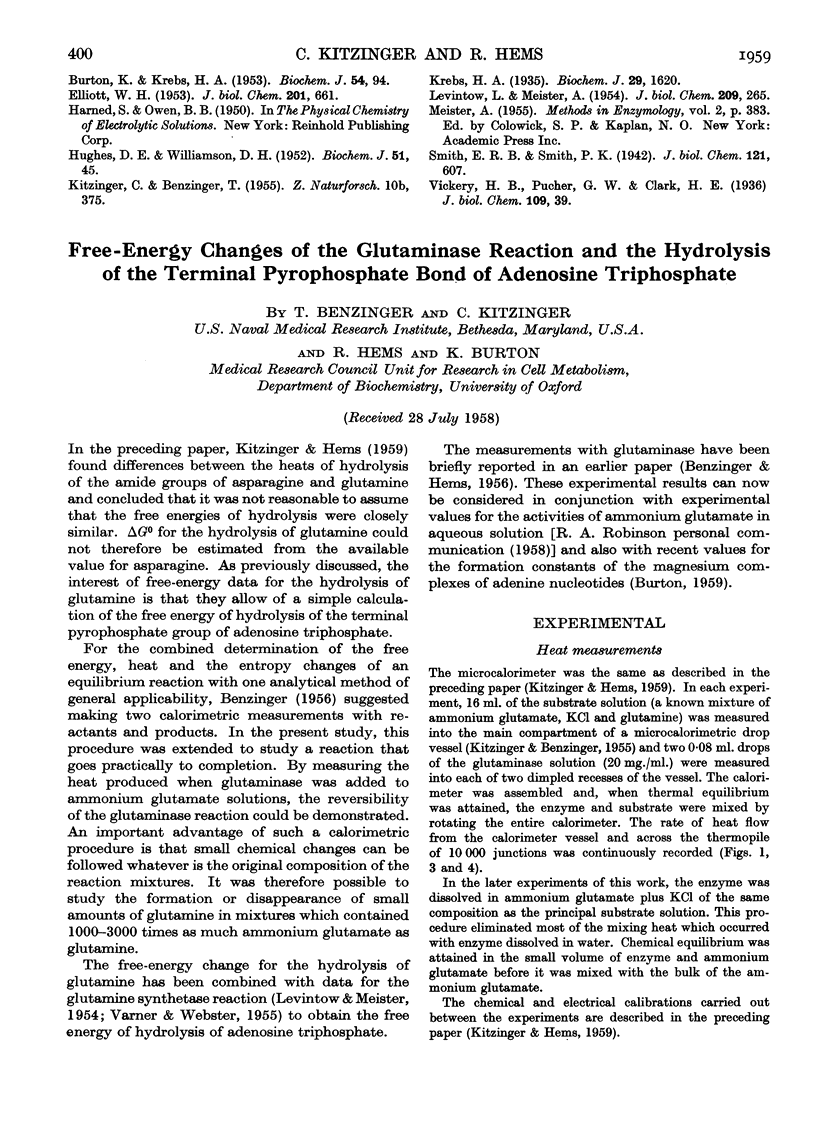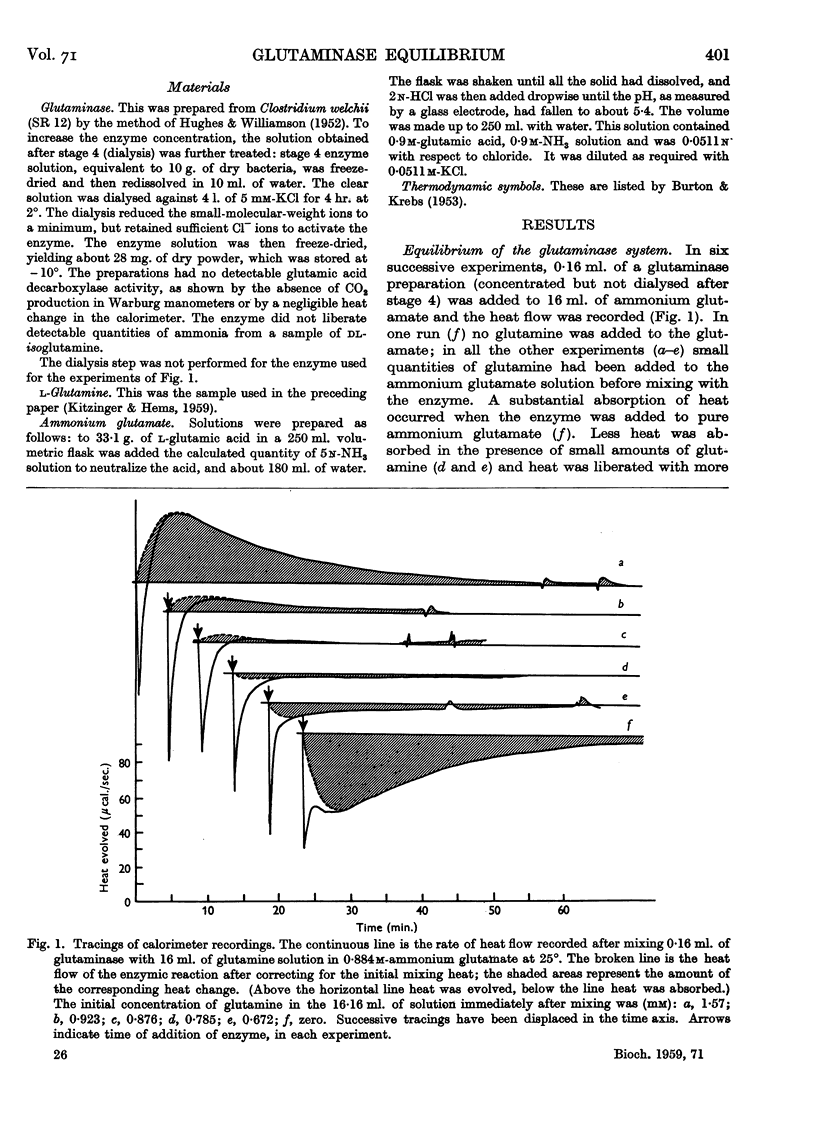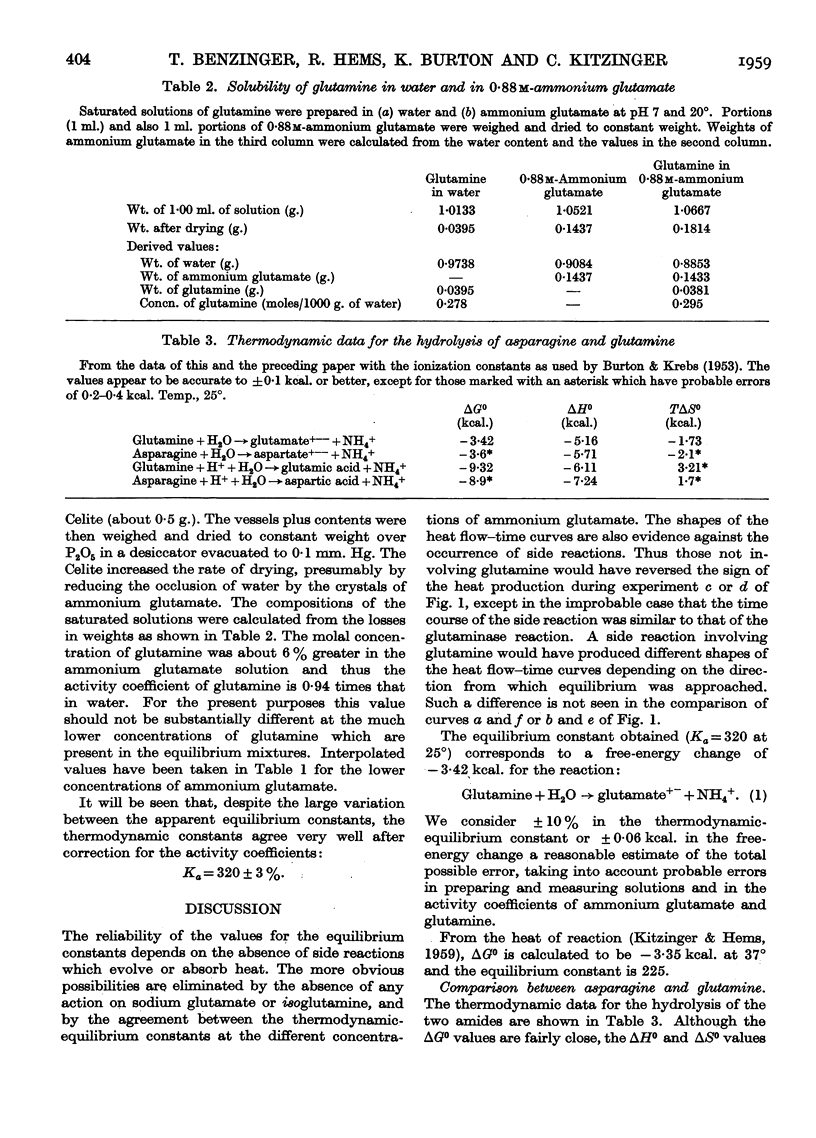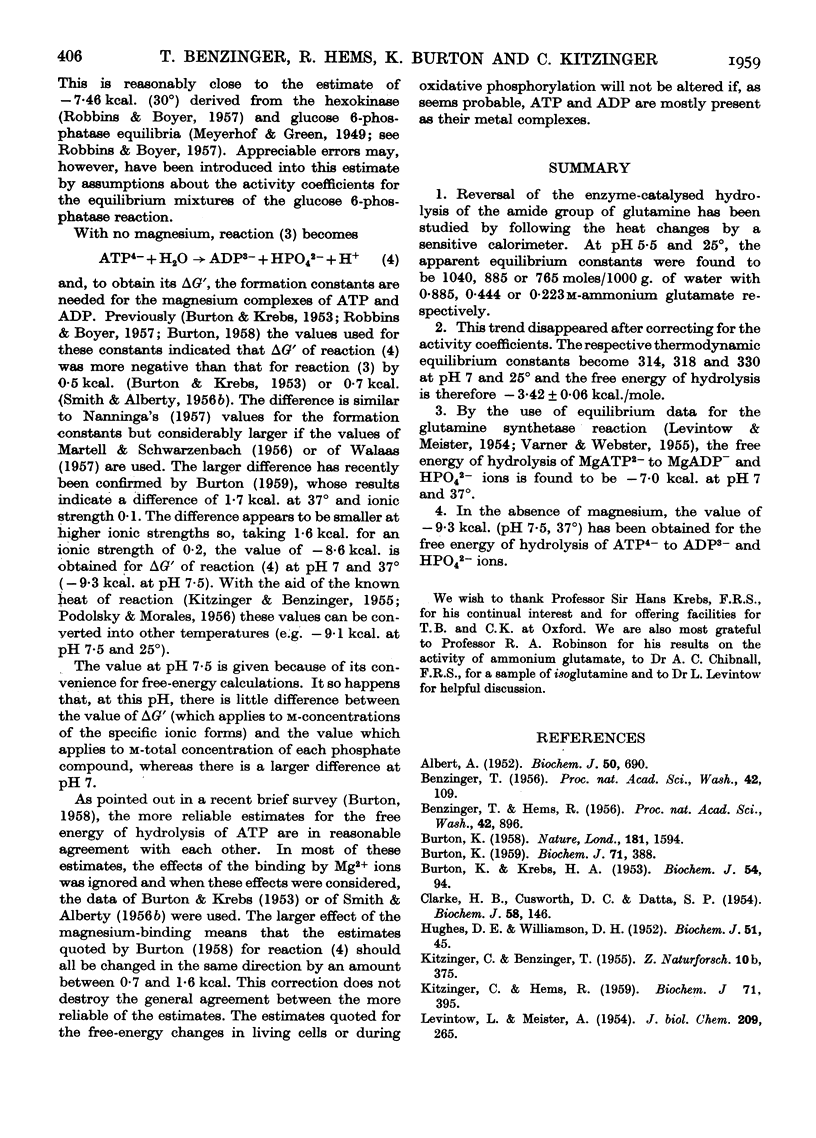Full text
PDF







Selected References
These references are in PubMed. This may not be the complete list of references from this article.
- ALBERT A. Quantitative studies of the avidity of naturally occurring substances for trace metals. II. Amino-acids having three ionizing groups. Biochem J. 1952 Mar;50(5):690–697. doi: 10.1042/bj0500690. [DOI] [PMC free article] [PubMed] [Google Scholar]
- BOYER P. D., ROBBINS E. A. Determination of the equilibrium of the hexokinase reaction and the free energy of hydrolysis of adenosine triphosphate. J Biol Chem. 1957 Jan;224(1):121–135. [PubMed] [Google Scholar]
- BURTON K. Energy of adenosine triphosphate. Nature. 1958 Jun 7;181(4623):1594–1595. doi: 10.1038/1811594a0. [DOI] [PubMed] [Google Scholar]
- BURTON K. Formation constants for the complexes of adenosine di- or tri-phosphate with magnesium or calcium ions. Biochem J. 1959 Feb;71(2):388–395. doi: 10.1042/bj0710388. [DOI] [PMC free article] [PubMed] [Google Scholar]
- BURTON K., KREBS H. A. The free-energy changes associated with the individual steps of the tricarboxylic acid cycle, glycolysis and alcoholic fermentation and with the hydrolysis of the pyrophosphate groups of adenosinetriphosphate. Biochem J. 1953 Apr;54(1):94–107. doi: 10.1042/bj0540094. [DOI] [PMC free article] [PubMed] [Google Scholar]
- Benzinger T. H., Hems R. REVERSIBILITY AND EQUILIBRIUM OF THE GLUTAMINASE REACTION OBSERVED CALORIMETRICALLY TO FIND THE FREE ENERGY OF ADENOSINE TRIPHOSPHATE HYDROLYSIS. Proc Natl Acad Sci U S A. 1956 Dec;42(12):896–900. doi: 10.1073/pnas.42.12.896. [DOI] [PMC free article] [PubMed] [Google Scholar]
- CLARKE H. B., CUSWORTH D. C., DATTA S. P. Thermodynamic quantities for the dissociation equilibria of biologically important compounds. 3. The dissociations of the magnesium salts of phosphoric acid, glucose 1-phosphoric acid and glycerol 2-phosphoric acid. Biochem J. 1954 Sep;58(1):146–154. doi: 10.1042/bj0580146. [DOI] [PMC free article] [PubMed] [Google Scholar]
- HUGHES D. E., WILLIAMSON D. H. Some properties of the glutaminase of Clostridium welchii. Biochem J. 1952 Apr;51(1):45–55. doi: 10.1042/bj0510045. [DOI] [PMC free article] [PubMed] [Google Scholar]
- KITZINGER C., HEMS R. Enthalpies of hydrolysis of glutamine and asparagine and of ionization of glutamic and aspartic acids. Biochem J. 1959 Feb;71(2):395–400. doi: 10.1042/bj0710395. [DOI] [PMC free article] [PubMed] [Google Scholar]
- LEVINTOW L., MEISTER A. Reversibility of the enzymatic synthesis of glutamine. J Biol Chem. 1954 Jul;209(1):265–280. [PubMed] [Google Scholar]
- MORALES M. F., BOTTS J., BLUM J. J., HILL T. L. Elementary processes in muscle action: an examination of current concepts. Physiol Rev. 1955 Jul;35(3):475–505. doi: 10.1152/physrev.1955.35.3.475. [DOI] [PubMed] [Google Scholar]
- PODOLSKY R. J., MORALES M. F. The enthalpy change of adenosine triphosphate hydrolysis. J Biol Chem. 1956 Feb;218(2):945–959. [PubMed] [Google Scholar]
- Varner J. E., Webster G. C. Studies on the Enzymatic Synthesis of Glutamine. Plant Physiol. 1955 Sep;30(5):393–402. doi: 10.1104/pp.30.5.393. [DOI] [PMC free article] [PubMed] [Google Scholar]


